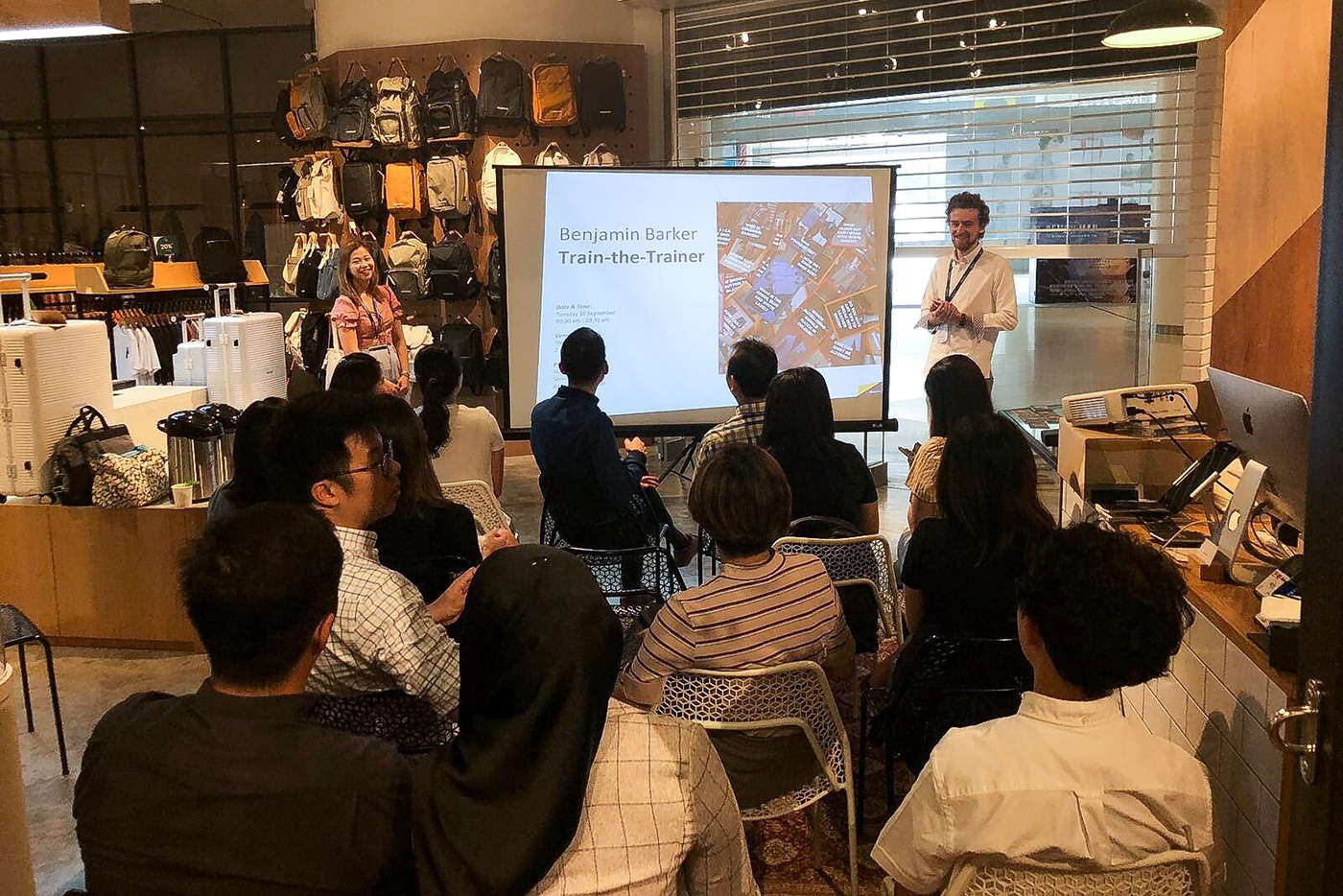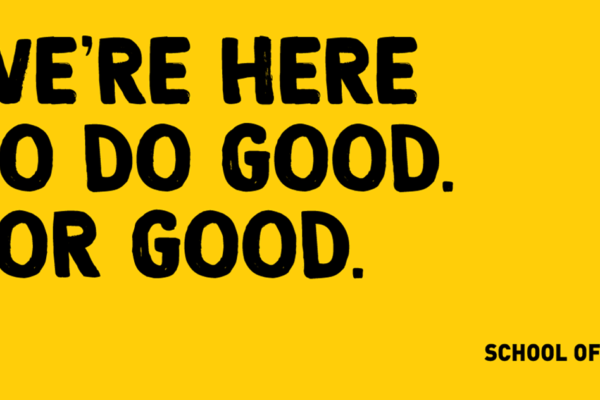Design 101: How can design help me to understand my customers better?
When we talk about using design for business, we don’t just mean using it to create a beautiful logo or an attractive shopfront. Instead, we are talking about using the skills, tools and mindset of a designer to understand customers deeply, which leads to innovative human-centred solutions and a profitable business. This article will give you an overview of a more effective way to solve your problems and therefore improve your business by design.
By Cheong Suk Wai
Ryan Han was 28 years old when he opened his fruit juice kiosk at the Square 2@Novena mall in Thomson Road. Customers raved about his avocado smoothies, but footfall was low. His business soon bled S$2,000 monthly and he sold it off to an elderly couple who wanted to own a fruit store and to incorporate herbal teas as part of the offerings.
In hindsight, Han says he should have researched properly what shoppers at the mall craved. “I wanted my business to be all about fruit,” he says, “but I should have come up with new things, like tea plus fruit.”
As a business owner yourself, you might have faced similar challenges like Han’s at some point.
To overcome these, you likely brainstormed new ways to tweak and sell your products and services; ramped up sales and marketing efforts; and cut costs. Such moves work well when the economy is humming and it’s business as usual.
But you are now likely facing a new normal – with new technologies disrupting the way things work every few months; customer behaviour changing just as fast; and global economic uncertainty.
Ask: “Who is this for?”
The traditional approach to fixing what’s broken would be to think up fresh ideas, rejig your processes and redouble your efforts. But then you would be looking at the problem from only one perspective – yours.
Business is about people, specifically, your customers. So, in finding a solution to boost business, who better to consult than those to whom you are trying to sell?
Nav Qirti, an expert in researching what customers want, says: “You may be making the world’s best pens but still fail in business because you hadn’t noticed that most people now use smartphone styluses, not pens.”
Next: Get to know them better
Now you know why you should always consult your customers first, you would need a way to solicit their insights, analyse these and then work out a business solution.
Qirti, who is Principal of strategic design consultancy Ideactio, recently worked like so with local furniture-maker Scanteak. “Of course, they had talked to their customers before,” he says, “but they had not done extensive research to come up with clear customer behaviours.
“Once we showed them that there were actually seven different types of Scanteak customer personas, it became clear to them who they wanted to focus on.”

Similarly, local menswear label Benjamin Barker used design thinking to understand its range of customers better. The 14 customer profiles identified were made into profile cards used to train the SME’s staff to handle the various customer types and scenarios. This contributed to record sales for the company.
Co-create solutions together
One way to understand customers deeply is to hire design experts, who will use a human-centred approach to help you empathise with your customers’ needs.
They will then take you through a user-focused process to brainstorm, test and land on the most appropriate solutions. The team you have assigned to work with these design experts will likely pick up some of these skills through first-hand experience.
Here is how you and the consultant are likely to work together:
- Determine the type of research you want conducted, including observing customers in-store. In the main, decide who and how many customers to interview, what to ask them and what exactly you want to learn from them;
- After your consultant completes the customer interviews – which includes testing the views of initial interviewees on subsequent interviewees – crunch the feedback and put the insights on Post-its or in diagrams so you are able to see the big picture;
- Based on these big-picture insights, determine the core of the problem and brainstorm possible solutions;
- The consultant will then devise a prototype solution(s) and keep road-testing it with customers until they say it will work (this Step 4 is likely to be repeated); and
- Implement the solution and have the consultant monitor, measure and evaluate its impact on your business.
Design thinking
What you have just read above is essentially the process of design thinking or DT for short. DT is an iterative process that uses elements from the designer’s toolkit (e.g. in-depth interviews with individual customers, also known as ethnographic research and real-time tweaking of a prototypes based on early feedback, also known as rapid prototyping) and a designer’s mindset (e.g. empathy, collaboration and experimentation) to address challenges in a rounded and innovative manner.
In a nutshell, it is a human-centred approach that places customers and their needs at the heart of the innovation process. For instance, it is based on in-depth interviews and observation to deeply understand customers and discover their needs, some of which these customers may not be able to articulate well by themselves.
Design thinking is agile problem-solving
Time is money, especially in business, so you would naturally be concerned that the steps above might soak up too much resources. Design consultants are, however, business folk too and so they understand fully how important it is to hit upon a solution in quick time.
Wee Zi Huan (who goes by the moniker “Zwee”), founder and CEO of Savant Degrees, says his rule of thumb is “six months to a solution” as he has found that duration best for turning an idea into a Minimum Viable Product (MVP).
This involves taking Steps 1 to 5 above in “sprints” of two to three weeks each, allowing that Step 4 will need to be repeated.

One MVP that he cracked in 2019 was Jasons Deli, a grab-and-go stop for convenience meals and necessities. It was his answer to his client Dairy Farm Group’s quest for an alternative to its now hard-to-scale “20,000 sqf Cold Storage supermarkets”.
The new brand – Dairy Farm’s first in a decade – was conceptualised in six months, and the first outlet at Marina Bay Link Mall turned profitable in three.
How to get started
Wee says the answer to the question of cost lies in understanding that all businesses have a life cycle, with SMEs particularly sensitive to incurring extra costs.
He recommends that you decide when and how to solve your problems as follows:
- If you’re just starting out: Attend talks and workshops on problem-solving so the steps are always fresh in your mind and you can tap them when your business grows;
- If you need higher-level strategies: Submit your problem statement to an open innovation platform, such as openinnovation.sg run by the Infocomms Media Development Authority (IMDA), where problem-solving experts can bid to help you.
- If you’re establishing a transformation team: Through DesignSingapore Council and EnterpriseSG, tap the Government’s available grants and programmes to build your team.
Wee advises that SMEs could form “consortiums” to learn and propose problems for solving because, apart from having strength in numbers, such consortiums are large enough for design consultants to invest the time needed to effectively help them.
He notes, however, that you should also consider having “chill-out sessions” where companies big and small can exchange ideas over drinks with design experts. He hosted one such session with Dairy Farm and the owners of Bettr Barista and The Soup Spoon. “Over drinks, we brought particular experts together with people who needed a fresh pair of lens to their problem,” he says.”The sharings at these sessions were quite powerful to unlock new insights”
Han, the owner of Little Fruit Farm, says he would certainly have benefitted from such exchanges of ideas to solve business problems.
To his credit, after his business failed, he actively sought out DT and mastered its finer points. Today, he is a design expert himself, having helped such organisations as SingHealth and DBS Bank shape their products and services to fulfil their end-users’ and customers’ needs effectively.
And if he had a second crack at running his fruit juice kiosk, he would do so armed with many fresh ideas to turn business around. He says: “I could have done pop-ups or even a fruit market, where customers could pick whatever fruit they wanted and I’d blend it for them.” And while Han maintains that while user research is important, a successful entrepreneur would still need an appetite for risk, sharing a quote by Anna Wintour: “It’s very important to take risks… In the end, you have to work from your instinct and feeling and take those risks and be fearless.”







